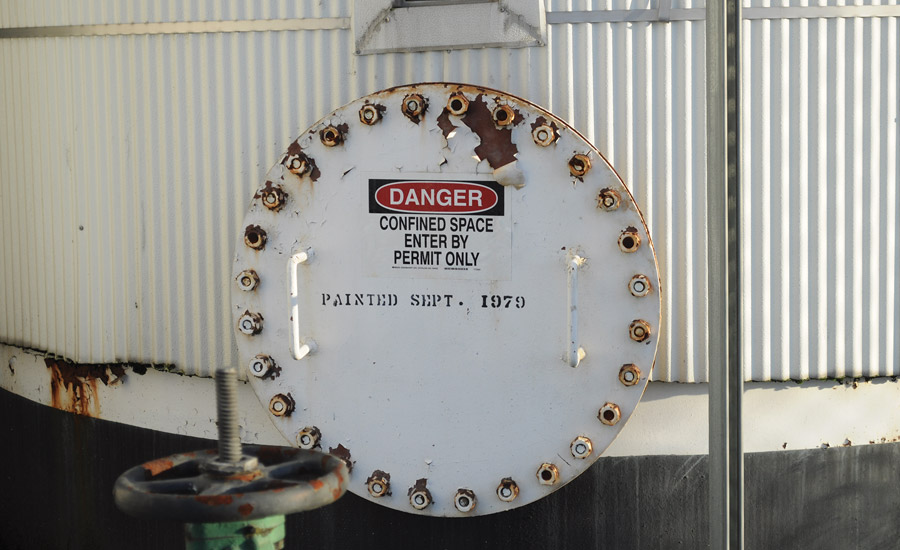The Occupational Safety and Health Administration (OSHA) recently released a lengthy Q&A that clarifies the scope of its controversial Confined Spaces in Construction final rule, which received negative feedback from the HVACR industry and was labeled as overreaching and burdensome to residential contractors when it was released last spring. The Q&A clarifies that the final rule has a very limited application in the residential HVAC industry.
“After the OSHA rule came out, a petition for review went to the U.S. Court of Appeals for the Fifth Circuit,” said Barton James, senior vice president of government relations for ACCA. “The National Association of Home Builders [NAHB] was the lead, and it resulted in a settlement after months of negotiations. With this settlement, OSHA agreed to provide the Qs and As to its regional offices as well as state plan programs, and to publish it on its webpage. OSHA will also incorporate the Qs and As into its compliance directive for the rule.”
A PLEASING SOLUTION
When it was originally released in May 2015, the final rule added a new subpart to the existing confined spaces rule that included a permit program designed to protect employees from exposure to the many hazards associated with work in confined spaces, including atmospheric and physical hazards. For HVACR contractors, confined spaces include some of the areas where HVACR equipment and components are frequently located, including attics, basements, and crawlspaces. For permit-required confined spaces — spaces that have a hazardous atmosphere, the potential for suffocation, a layout that might trap a worker through converging walls, a sloped floor, or any other serious safety or health hazard — additional requirements would have placed a significant monetary burden on contractors, who would often have to dispatch multiple technicians to a job instead of just one in order to comply with the rule. The customer would have to likely pay increased labor costs, too.
“This is a big deal,” James said. “This was going to be extremely detrimental to this industry — and, ultimately, to the customer — because that’s where the cost falls. So, through legal means, we’ve been able to get some clarity, and our members are in a far better position.
“We’ve been working with our partners,” he continued. “As with anything in this industry, it doesn’t happen alone. NAHB deserves a lot of credit, as does AGC [Associated General Contractors of America]. All of us were involved in working with our friends on the Hill to push this.”
“The OSHA rule, while intended to clarify construction activities, actually created significantly more confusion. While people understood the general industry protocols, the language of the construction confined space program just created much more uncertainty,” said Chuck White, vice president of regulatory affairs for Plumbing-Heating-Cooling Contractors (PHCC) — National Association. “It’s a very positive step to get additional clarifications and guidance explaining some of what was initially perceived as hazards.”
REMOVING UNDUE BURDEN
Rob Minnick, CEO and president of Minnick’s Inc. in Laurel, Maryland, said his company began complying with the confined spaces rule shortly after it was released rather than waiting for the effective date to comply.
“When they first started talking about it and giving a date that it’s going to be released and so forth, we started putting it into play just so it would be a habit by the time it took effect,” Minnick said. “When we knew a unit was in a crawlspace or an attic, we sent two people out. But, if we didn’t know where the unit was, maybe because the homeowner didn’t know, we only sent one person out there. If it turned out to be in a permit-required confined space, we had to reschedule because we had to get a second person there.”
While the rule would’ve been burdensome, Minnick said anything that improves safety isn’t necessarily a bad idea, and, if anything, the controversy around the rule has only increased awareness of the hazards present in many confined spaces.
“I think this makes people definitely want to be aware, and, of course, it’s made us aware, and we talk about it a lot, so it’s been entered into our conversation and has made us aware of safety concerns,” he said. “Am I relieved? I don’t know if I’d ever say I’m relieved. It’s just another safety precaution. It’s more about being aware.”
White said the settlement and Q&A give contractors answers, to be sure, though he was also hesitant to say his members are relieved by the clarifications.
“I suppose the word ‘relief’ is a little too strong, but it sets their minds at ease, and they now more fully understand these requirements,” he said. “In the initial readings, the mere presence of electricity, gas, or other specific things in the spaces did imply it triggered the permit-required confined space requirements. There have been a lot of clarifications as to exactly what would then trigger the permit-required confined space.”
White and James both also pointed out that this is likely not the last word when it comes to safety requirements in confined spaces.
“I think we’ve turned back the clock on OSHA, but it doesn’t mean they won’t come back on this,” James said. “So, making sure members of Congress are vigilant on our behalf and on behalf of consumers is really important.”
“Certainly, members are always concerned there will be more coming — not immediately, but down the road,” White said. “If the regulatory agencies would work a little more with the industries affected, some of this confusion could be headed off in the early stages instead of putting everybody through the ringer.”
To read the Q&A, visit www.osha.gov/confinedspaces/faq.html.
Publication date: 9/19/2016
Want more HVAC industry news and information? Join The NEWS on Facebook, Twitter, and LinkedIn today!







